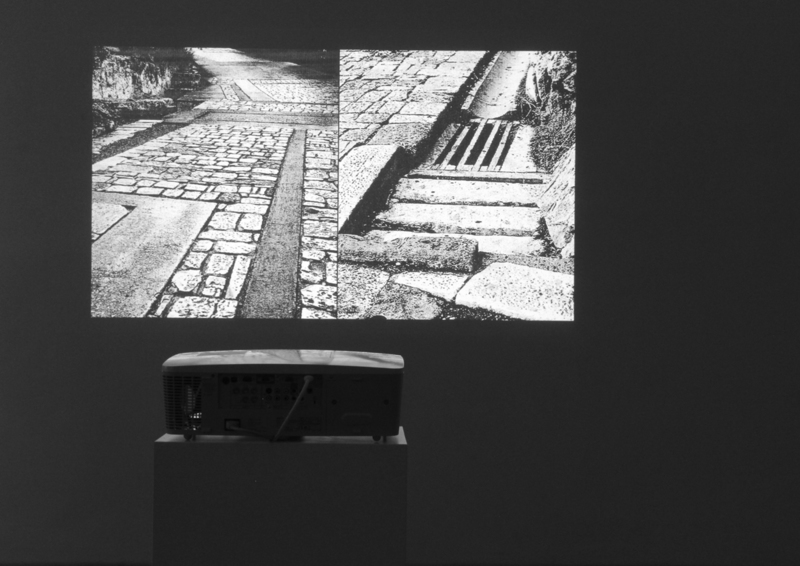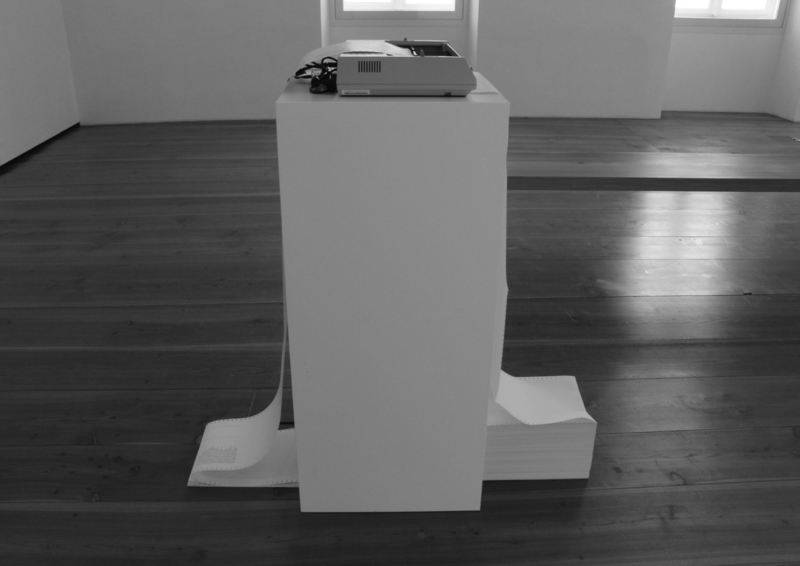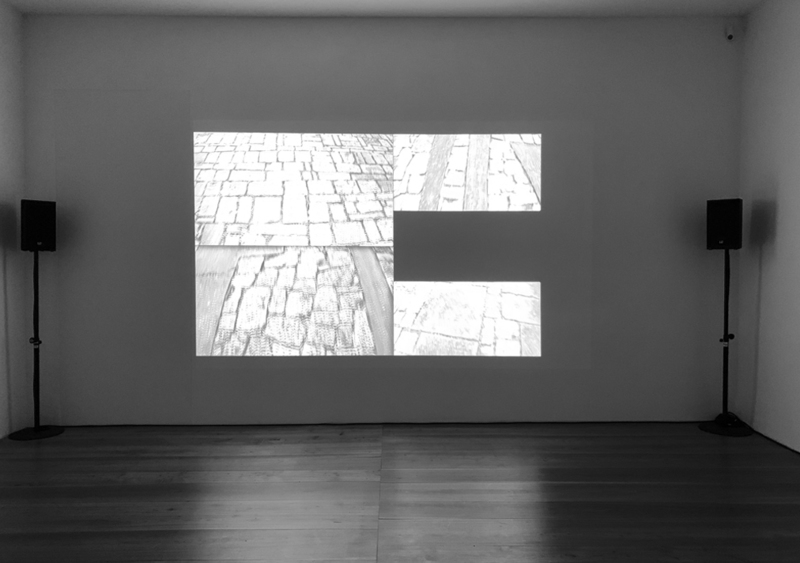Jan Jelinek:
Hyperion
Jan Jelinek:
Hyperion
4-channel composition and video installation, commissioned work for Donaueschinger Musiktage 2020 and Hölderlin.20/21. Technical assistance: Karl Kliem
Hyperion Composition
Is it possible to interpret Friedrich Hölderlin's Hyperion purely algorithmically? The Hyperion Composition approaches the epistolary novel of the same name through computer linguistics, analysing Hölderlin's text for repeated word and their respective contexts. The only self-contained word sequence among those that appear several times is ‘Eines zu sein mit Allem' (To be one with everything). The composition concentrates on this pentagram of words, interpreting it as a distillation of the novel's content and having it spoken by an online language programme (Natural Readers, voice: Berta). Through manipulation and extreme delay of the playback speed (time-stretch algorithms) the word repetitions ALLEM, EINS and SEIN are condensed into brutalistic-monumental artefacts of reverberation.
Hyperion Installation
Between 1954 and 1958, the architect Dimitris Pikionis designed a system of natural paths for the Acropolis and the adjacent Philopappos Hill. Hölderlin's novel and Pikionis's sensitive, intuitively improvised landscape design are united by the longing for an imaginary Greek identity. Both believed they had found a natural state in ancient Athens that did not separate man as a subject from nature as an object. Critical of rationalism, both Pikionis and Hölderlin sought this experience of oneness: ‘We have fallen away from our nature and what, if one can believe, was once One, now opposes itself ... To end that eternal conflict between our self and the world, to bring back that peace of all peace that is higher than all reason, to unite ourselves in one boundless and infinite whole - that is the goal of all our striving ...' (F. Hölderlin). ‘... it seems to me that nature wants to teach us that nothing exists for itself alone, but that everything is part of a superior harmony.' (D. Pikionis).
Hyperion looks at the paving of Dimitris Pikionis's paths, composed of an eclectic mix of fragment of classical and classicist buildings, modern concrete and natural stone found on site. The films are controlled by the composition.
Hyperion was shown at Museum Art.Plus in Donaueschingen, 2020

Museum Art.Plus, 2nd room, slideshow (overview of the area designed by Dimitris Pikionis (Acropolis and Philoppapos Walks), 2020

Museum Art.Plus, 2nd room, slideshow & matrix printer installation, 2020
Matrix printer installation: text/data analysis of Friedrich Hölderlin's Hyperion. The dot matrix printer is printing constantly three search commands:
5-word sequences with respective context words, sorted by frequency.
5-word sequences with keyword GOTT (god, most frequent noun in the text)
5-word sequences with keyword NATUR (nature, second most frequent noun in the text)

Museum Art.Plus, 2nd room, matrix printer installation, 2020

Museum Art.Plus, screening room, 2020
deutsch:
Komposition Hyperion
Kann man Friedrich Hölderlins Hyperion rein algorithmisch interpretieren? Die Komposition Hyperion nähert sich dem gleichnamigen Roman mittels Computerlinguistik, indem sie Hölderlins Text auf Wortwiederholungen mit jeweiligen Kontextwörtern analysiert. Die einzige in sich abgeschlossene unter den mehrmals vorkommenden Wortfolgen ist Eines zu sein mit Allem. Die Komposition konzentriert sich auf dieses Wortpentagramm, interpretiert es als inhaltliches Destillat des Romans und lässt es von einem Online-Sprachprogramm (Natural Readers, Stimme: Berta) einsprechen. Durch Manipulation und extreme Verzögerung der Abspielgeschwindigkeit (Time-Stretch-Algorithmen) verdichten sich die Wortwiederholungen ALLEM, EINS und SEIN zu monumental-brutalistischen Verhallungsartefakten.
Installation Hyperion
Der Architekt Dimitris Pikionis entwarf von 1954-1958 ein System aus natürlichen Pfaden für die Akropolis und den angrenzenden Philopappos-Hügel. Hölderlins Roman und Pikionis’ sensible, während des Baus entwickelte Landschaftsgestaltung eint die Sehnsucht nach einem imaginären Griechentum. Beide glauben im antiken Athen einen Naturzustand zu finden, der den Mensch als Subjekt nicht von der Natur als Objekt trennte. Als Rationalismuskritiker suchen sowohl Pikionis als auch Hölderlin nach dieser Einheitserfahrung: Wir sind zerfallen mit der Natur, und was einst, wie man glauben kann, Eins war, widerstreitet sich jetzt … Jenen ewigen Widerstreit zwischen unserem Selbst und der Welt zu endigen, den Frieden alles Friedens, der höher ist, denn alle Vernunft, den wiederzubringen, uns mit der Natur zu vereinigen zu Einem unendlichen Ganzen, das ist das Ziel all unseres Strebens (F. Hölderlin) … was die Natur, scheint mir, uns lehren möchte: Daß nichts für sich allein existiert, sondern daß alles Teil einer übergeordneten Harmonie ist. (D. Pikionis)
Die Filminstallation Hyperion blickt auf Pikionis’ Pfadpflasterung, die sich eklektisch aus Versatzstücken antiker Bauten und klassizistischer Wohnhäuser, modernem Beton und vor Ort gefundenem Naturstein zusammensetzt. Die Filme werden von der Komposition gesteuert.